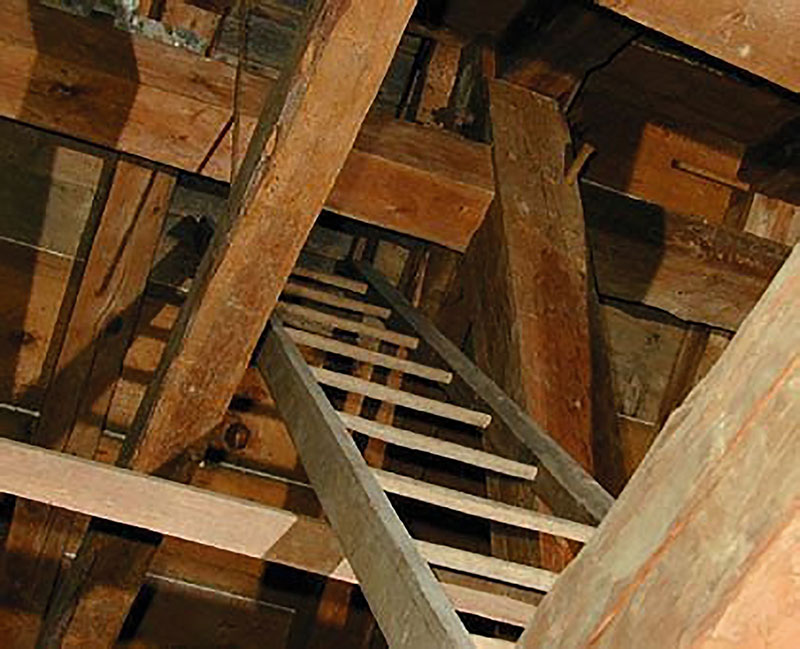Follow safety advice when using ladders – or you could descend into chaos
 When working with ladders in churches or old buildings – which often have high ceilings and hard-to-reach places – it’s essential to follow safety guidelines, to prevent accidents and ensure the well-being of those involved. There are some key points to consider.
When working with ladders in churches or old buildings – which often have high ceilings and hard-to-reach places – it’s essential to follow safety guidelines, to prevent accidents and ensure the well-being of those involved. There are some key points to consider.
Appropriate ladder selection
Choose a ladder that is the appropriate height for the task: ensure it can safely reach the desired surface. Inspect the ladder before each use, checking for any signs of damage or wear and tear, and replace any damaged components.
Stability and placement
- Place the ladder on a level surface, free from any obstructions or hazards.
- Ensure the surfaces supporting the ladder are safe, ie stable and firm.
- Position the ladder to ensure its stability and prevent slipping.
- If using an extension ladder it should extend sufficiently above the landing place, unless there’s provision for an adequate handhold.
Avoid common mistakes
- Avoid overreaching while on the ladder: keep your body centred between the rails.
- Maintain three points of contact (two feet and one hand or two hands and one foot) while climbing or descending.
- Do not use ladders near doorways, walkways or high-traffic areas.
- Avoid distractions while on the ladder, such as using a phone.
- The practice of ‘footing’ a ladder – where a second person places a foot on the bottom rung – is no longer accepted as good practice.
Bell tower ladders
Ensuring the safety of bell tower ladders is crucial to prevent accidents. There are some steps you can take to check and maintain the safety of your ladder.
Visual inspection
- Inspect the rungs: Look for signs of damage or excessive wear on the ladder rungs. Ensure they are secure and not loose.
- Check fixings: Examine the top and foot fixings. Make sure they are tight, robust and securely attached.
- Remove obstacles: Clear any oil, dirt, grease or paint that could cause slips and falls.
Emergency procedures
- Ensure that emergency procedures are clear and can be followed by both ringers and other people in the tower.
- Display signs if anyone is working at higher levels in the tower.
Safety tips for ringers
- Maintain three points of contact when moving.
- Test footholds before applying weight.
- Be cautious of damaged or rotten floorboards.
- Avoid carrying large or heavy items up the ladder; use ropes instead.
Remember, safety is everyone’s responsibility and collaboration between ringers and church authorities is essential for maintaining a safe bell tower environment.
Safety is paramount when working at height. Take the necessary precautions, and if you have any additional questions feel free to seek advice from professionals or relevant authorities.
Of course, you could consult the expert: Brian at Nimrod Training Providers has been sharing his expertise for decades and would be happy to offer his training services to suit your needs regarding all health and safety issues. Drop him a line at This email address is being protected from spambots. You need JavaScript enabled to view it. or visit the website at www.nimrod-training.co.uk






